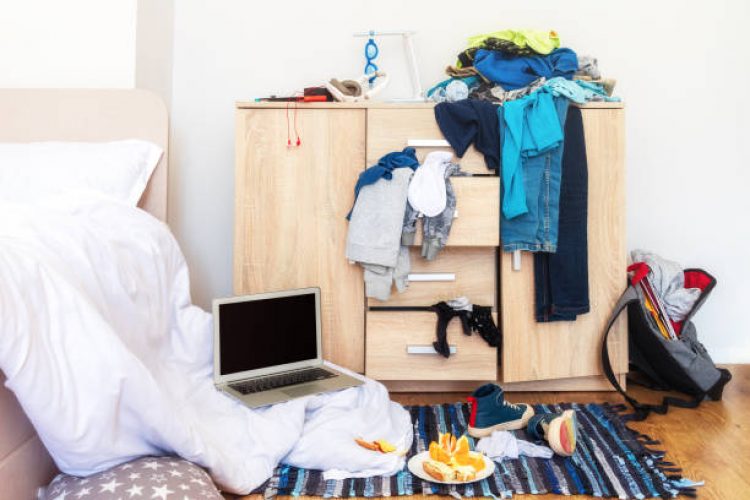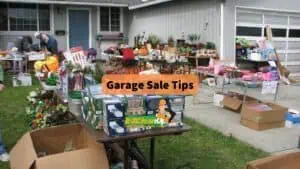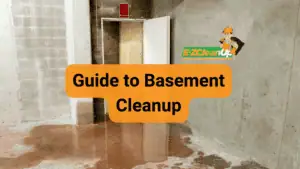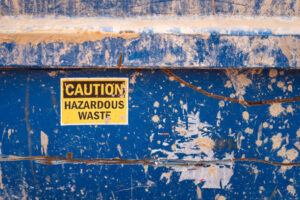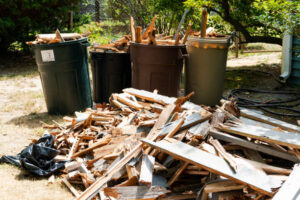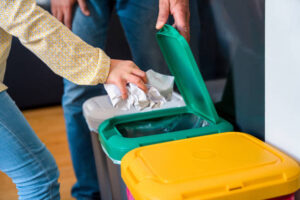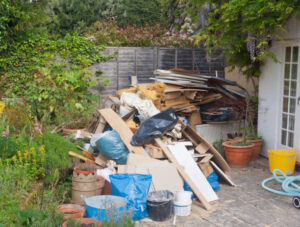If you’re feeling overwhelmed by the state of your home, you’re not alone. There are 300,000 items in the average American home, and 70% of Americans are pinning the success of 2025 on one thing: a clutter-free home, with 83% saying having a clean and organized home sets the tone for the entire year to come. The good news? Decluttering doesn’t have to be overwhelming when you approach it room by room.
This comprehensive guide will walk you through a strategic, room-by-room decluttering process that transforms your living space while reducing stress and improving your overall well-being.
Why Decluttering Matters
Before diving into the room-by-room strategies, it’s important to understand why decluttering is worth your time and effort.
Studies have proven that having a clean and organized space can help to improve the overall happiness of those living there, and it can help to reduce the overall stress of the atmosphere in a home. Additionally, studies have correlated increased productivity with reducing the clutter in a home and workplace.
Messy homes leave Americans feeling overwhelmed (42%), irritable (37%) or unfocused (34%). On the flip side, a clean home helps them feel more motivated to complete their to-do list (83%).
The decluttering industry itself tells a story about our collective need for organization. The current industry size is $11 billion, with a continued growth rate forecast through 2029, reflecting just how much Americans are struggling with excess possessions.
Getting Started: Preparation and Mindset
Before you begin your room-by-room journey, set yourself up for success:
Gather Your Supplies:
- Trash bags for items to discard
- Boxes or bins for donations
- Labels and markers
- Cleaning supplies
Establish Your Rules:
Decide what stays and what goes. Ask yourself: Have I used this in the past year? Does it add value to my life? Would I buy it again today?
Set Realistic Goals:
Rome wasn’t built in a day, and your home won’t be decluttered in one either. Set manageable time blocks for each room.
Room-by-Room Decluttering Strategy
1. The Kitchen
The kitchen is often the heart of the home—and unfortunately, a magnet for clutter. Start here to create immediate impact.
Focus Areas:
- Countertops: Clear everything off and only return essential daily-use items
- Cabinets: Remove expired food, duplicate utensils, and appliances you never use
- Refrigerator: Discard expired items and consolidate containers
- Drawers: Sort through utensils, gadgets, and that infamous “junk drawer”
Pro Tips:
- If you have duplicate tools, keep only the highest quality version
- Store items near where you use them (coffee mugs near the coffee maker)
- Use drawer dividers to maintain organization
2. The Living Room
Your living room should be a space for relaxation, not stress. Focus on creating an inviting, clutter-free environment.
Focus Areas:
- Coffee tables and side tables: Keep surfaces clear except for 1-2 decorative items
- Entertainment centers: Organize media, remove old electronics, and manage cable clutter
- Bookshelves: Keep books you’ve read and loved or plan to read soon
- Closets: Declutter coats, games, and miscellaneous storage
Pro Tips:
- Implement the “one in, one out” rule for decorative items
- Use attractive baskets to corral remote controls and small items
- Create designated spots for frequently used items like blankets or magazines
3. The Bedroom
Your bedroom should be a sanctuary. A cluttered bedroom can interfere with sleep quality and morning routines.
Focus Areas:
- Closet: This deserves special attention (see detailed section below)
- Nightstands: Keep only essentials like a lamp, alarm, and current reading material
- Under the bed: Remove storage or organize it intentionally
- Dresser tops: Clear all surfaces of clutter
Pro Tips:
- Make your bed every morning to set a positive tone
- Limit decorative items to create a calming atmosphere
- Store out-of-season clothing elsewhere
4. The Closet
Three-quarters of those surveyed are planning to get rid of unwanted/unneeded possessions in 2025, letting go of old clothing (66%), papers/notebooks (51%) and decorations (29%).
Focus Areas:
- Remove everything and sort into categories
- Try on questionable items—if they don’t fit or make you feel good, let them go
- Check for damaged, stained, or outdated items
- Organize by category and color for easy access
Pro Tips:
- Use the hanger trick: Turn all hangers backward, and after wearing an item, return it with the hanger facing forward. After six months, donate items still on backward hangers
- Invest in quality hangers for a uniform, organized look
- Store special occasion items separately
5. The Bathroom
Bathrooms accumulate products faster than almost any other room. A streamlined bathroom simplifies your daily routine.
Focus Areas:
- Medicine cabinet: Dispose of expired medications and cosmetics safely
- Under the sink: Remove empty bottles, old cleaning supplies, and excess products
- Shower/tub: Keep only currently used products
- Drawers: Organize toiletries, first-aid supplies, and personal care items
Pro Tips:
- Check expiration dates—mascara lasts 3 months, sunscreen expires after 1-2 years
- Keep duplicates to a minimum
- Use drawer organizers for small items
6. Home Office or Study Area
With more people working from home, an organized office space is crucial for productivity.
Focus Areas:
- Desk surface: Keep only essential items within reach
- Papers and files: Create a filing system, go digital when possible
- Supplies: Consolidate pens, eliminate dried-out markers, and organize essentials
- Electronics: Manage cords, dispose of obsolete technology properly
Pro Tips:
- Implement a daily 5-minute desk clear routine
- Use vertical storage to maximize space
- Create designated zones for different tasks
7. Kids’ Rooms
Children’s rooms can quickly become overwhelming with toys, clothes, and school supplies.
Focus Areas:
- Toys: Involve kids in the process, keep favorites, donate outgrown items
- Clothes: Remove items that no longer fit
- Books: Keep age-appropriate favorites, pass along outgrown books
- School papers: Keep special items in a memory box, recycle the rest
Pro Tips:
Studies have shown that kids play more deeply and creatively when they have less toys to choose from
- Use clear bins for toy organization
- Implement a toy rotation system
- Create a “one toy in, one toy out” rule
8. Garage or Storage Areas
These spaces often become catch-alls for items we don’t know what to do with. 1 out of every 10 Americans rent offsite storage—the fastest growing segment of the commercial real estate industry over the past four decades.
Focus Areas:
- Sort items into clear categories (sports equipment, tools, seasonal decorations)
- Remove broken or unused items
- Properly dispose of hazardous materials like old paint or chemicals
- Organize remaining items with clear labeling
Pro Tips:
- Use wall-mounted storage to maximize floor space
- Store seasonal items in clearly labeled bins
- Consider overhead storage racks
Maintaining Your Decluttered Home
Decluttering is only half the battle—maintaining your organized space is equally important.
Daily Habits:
- Spend 10-15 minutes each evening tidying up
- Put things back in their designated spots immediately after use
- Deal with mail and papers daily
Weekly Habits:
- Do a quick sweep of each room
- Process any accumulated items in “holding zones”
- Wipe down surfaces
Monthly Habits:
- Reassess one room or area
- Remove items that have accumulated
- Donate or sell items you no longer need
Annual Habits:
- Conduct a full home review
- Rotate seasonal items
- Update your organizational systems as needed
Sustainable Decluttering Practices
In 2024 we are more focused on alternative ways to get rid of things, from neighborhood buy-nothing groups, local non-franchised donation centers that give away items to those in need, Facebook Marketplace, and even resale sites like Poshmark and ThredUp.
Donation Options:
- Local charities and thrift stores
- Women’s shelters
- Schools and community centers
- Animal shelters (for towels and blankets)
Selling Options:
- Online marketplaces (Facebook Marketplace, Craigslist)
- Consignment shops
- Garage sales
- Specialty resale apps
Recycling Options:
- Electronics recycling programs
- Textile recycling
- Hazardous waste facilities for chemicals and paint
Common Decluttering Mistakes to Avoid
- Trying to do everything at once: Break the project into manageable chunks
- Not having a plan for removed items: Know where things will go before you start
- Keeping things “just in case”: If you haven’t used it in a year, you probably won’t
- Getting too sentimental: Take photos of sentimental items you can’t keep
- Buying organizing supplies first: Declutter first, then organize what remains
When to Seek Professional Help
A 2023 survey by the Australian Bureau of Statistics revealed that 50.5% of Australians are looking for organizing solutions to maximize their living areas. Sometimes, professional help makes sense.
Consider hiring a professional organizer if:
- You feel completely overwhelmed and don’t know where to start
- You’re dealing with significant accumulation or hoarding behaviors
- You have limited time due to work or family obligations
- You need an objective third party to help make decisions
- You’re preparing for a major life transition (moving, downsizing, etc.)
Conclusion
Decluttering your home room by room is a manageable, rewarding process that pays dividends in reduced stress, increased productivity, and improved quality of life. 12% of Americans have admitted that whenever they have guests, they worry about how cluttered their homes look—but it doesn’t have to be this way.
Remember, decluttering is a gradual process – it’s more about consistent small steps rather than a one-time purge. Start with one room, one drawer, or even one shelf. Progress, not perfection, is the goal.
By following this room-by-room approach and maintaining good habits, you’ll create a home that supports your well-being and reflects the life you want to live. Your decluttered, organized home is waiting—you just need to take the first step.
References
- 51 Home Organizing Statistics: How Cluttered is the Average House? – Book Clean Go
- 2024 Organizing & Decluttering Trends You Need To Know About – Organized-ish
- 21 Surprising Statistics That Reveal How Much Stuff We Actually Own – Becoming Minimalist
- Professional Organizer Market Size and Forecast, 2025-2032 – Coherent Market Insights
- Is a clean home the key to a successful 2025? – Talker Research

